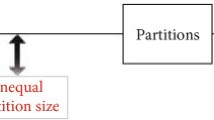Abstract
Digital PCR is rapidly gaining interest in the field of molecular biology for absolute quantification of nucleic acids. However, the first generation of platforms still needs careful validation and requires a specific methodology for data analysis to distinguish negative from positive signals by defining a threshold value. The currently described methods to assess droplet digital PCR (ddPCR) are based on an underlying assumption that the fluorescent signal of droplets is normally distributed. We show that this normality assumption does not likely hold true for most ddPCR runs, resulting in an erroneous threshold. We suggest a methodology that does not make any assumptions about the distribution of the fluorescence readouts. A threshold is estimated by modelling the extreme values in the negative droplet population using extreme value theory. Furthermore, the method takes shifts in baseline fluorescence between samples into account. An R implementation of our method is available, allowing automated threshold determination for absolute ddPCR quantification using a single fluorescent reporter.



Similar content being viewed by others
Abbreviations
- csv:
-
Comma separated value
- ddPCR:
-
Droplet digital polymerase chain reaction
- dPCR:
-
Digital polymerase chain reaction
- HTML:
-
HyperText Markup Language
- NTC:
-
Negative template control
- QQ plot:
-
Quantile–quantile plot
References
Hindson CM, Chevillet JR, Briggs HA et al (2013) Absolute quantification by droplet digital PCR versus analog real-time PCR. Nat Method 10:1003–1005
Sedlak RH, Jerome KR (2013) Viral diagnostics in the era of digital PCR. Diagn Microbial Infect Dis 75:1–4
Pinheiro LB, Coleman VA, Hindson CM et al (2012) Evaluation of a droplet digital polymerase chain reaction format for DNA copy number quantification. Anal Chem 84:1003–11
Hindson BJ, Ness KD, Masquelier DA et al (2011) High-throughput droplet digital PCR system for absolute quantitation of DNA copy number. Anal Chem 83:8604–10
Dube S, Qin J, Ramakrishnan R (2008) Mathematical analysis of copy number variation in a DNA sample using digital PCR on a nanofluidic device. PLoS One 3, e2876
Kiselinova M, Pasternak AO, De Spiegelaere W et al (2014) Comparison of droplet digital PCR and seminested real-time PCR for quantification of cell-associated HIV-1 RNA. PLoS One 9, e85999
Strain MC, Lada SM, Luong T et al (2013) Highly precise measurement of HIV DNA by droplet digital PCR. PLoS One 8, e55943
Sedlak RH, Cook L, Huang M-L et al (2014) Identification of chromosomally integrated human herpesvirus 6 by droplet digital PCR. Clin Chem 60:765–72
Jones M, Williams J, Gärtner K et al (2014) Low copy target detection by Droplet Digital PCR through application of a novel open access bioinformatic pipeline, “definetherain”. J Virol Methods 202:46–53
Dreo T, Pirc M, Ramsak Z (2014) Optimising droplet digital PCR analysis approaches for detection and quantification of bacteria : a case study of fire blight and potato brown rot. Anal Bioanal Chem 406:6513–6528
Buzon MJ, Massanella M, Llibre JM et al (2014) HIV-1 replication and immune dynamics are affected by raltegravir intensification of HAART-suppressed subjects. Nat Med 16:460–65
van der Sluis RM, van Montfort T, Centlivre M et al (2013) Quantitation of HIV-1 DNA with a sensitive Taqman assay that has broad subtype specificity. J Virol Methods 187:94–102
Liszewski MK, Yu JJ, O’Doherty U (2009) Detecting HIV-1 integration by repetitive-sampling Alu-gag PCR. Methods 47:254–260
Palmer S, Wiegand AP, Maldarelli F et al (2003) New real-time reverse transcriptase-initiated PCR assay with single-copy sensitivity for human immunodeficiency virus Type 1 RNA in Plasma. J Clin Microbiol 41:4531–4536
Fischer M, Joos B, Hirschel B et al (2004) Cellular viral rebound after cessation of potent antiretroviral therapy predicted by levels of multiply spliced HIV-1 RNA encoding nef. J Infect Dis 190:1979–1988
Lizée G, Aerts JL, Gonzales MI et al (2003) Real-time quantitative reverse transcriptase-polymerase chain reaction as a method for determining lentiviral vector titers and measuring transgene expression. Hum Gene Ther 14:497–507
De Spiegelaere W, Malatinkova E, Kiselinova M et al (2013) Touchdown digital polymerase chain reaction for quantification of highly conserved sequences in the HIV-1 genome. Anal Biochem 439:201–3
R Development Core Team (2014) R: A language and environment for statistical computing. R foundation for statistical computing, Vienna, Austria. http://www.R-project.org/ (Accessed January 2014)
Robertson T, Cryer JD (1974) An iterative procedure for estimating the mode. J Am Stat Assoc 69(348):1012–1016
Bickel DR, Fruehwirth R (2006) On a fast, robust estimator of the mode: comparisons to other robust estimators with applications. Comput Stat Data Anal 50(12):3500–3530
Stephenson AG (2002) evd: Extreme Value Distributions. R News, 2(2):31–32 URL: http://CRAN.R-project.org/doc/Rnews/
Malec P, Schienle M (2014) Nonparametric kernel density estimation near the boundary. Comput Stat Data Anal 72:57–76
Acknowledgments
The authors would like to acknowledge the support of following research grants: Amfar (Group funding, grant 108314-51-RGRL), HIVERA/SBO IWT (Group funding, grant 130442), FWO (Linos Vandekerckhove, grant 1.8.020.09.N.00), IWT (Pawel Bonzckowski, grant 111286; Eva Malatinkova, grant 111393), BOF (Maja Kiselinova, grant 01N02712), King Baudouin Foundation (Group funding, grant 2010-R20640-003), unrestricted grant of Bristol-Myers Squibb Belgium (Group funding), Multidisciplinary Research Partnership Bioinformatics: From Nucleotides to Networks Project (01MR0310W) of Ghent University (Group funding), and IAP research network P7/06 of the Belgian Government (Belgian Science Policy; Group funding).
Conflict of interest
The authors declare to have no competing interests.
Authors’ contributions
Performed the ddPCR runs: MK, EM, KV. Analyzed the ddPCR data: WT, PB, WDS. Developed the statistical methodology: MV, JDN, OT, WT, WDS. Wrote the R code: WT, MV. Wrote the paper: WT, WDS, MV, JDN. Critically read, reviewed, and approved the final version of the manuscript: all authors.
Author information
Authors and Affiliations
Corresponding author
Rights and permissions
About this article
Cite this article
Trypsteen, W., Vynck, M., De Neve, J. et al. ddpcRquant: threshold determination for single channel droplet digital PCR experiments. Anal Bioanal Chem 407, 5827–5834 (2015). https://doi.org/10.1007/s00216-015-8773-4
Received:
Revised:
Accepted:
Published:
Issue Date:
DOI: https://doi.org/10.1007/s00216-015-8773-4




